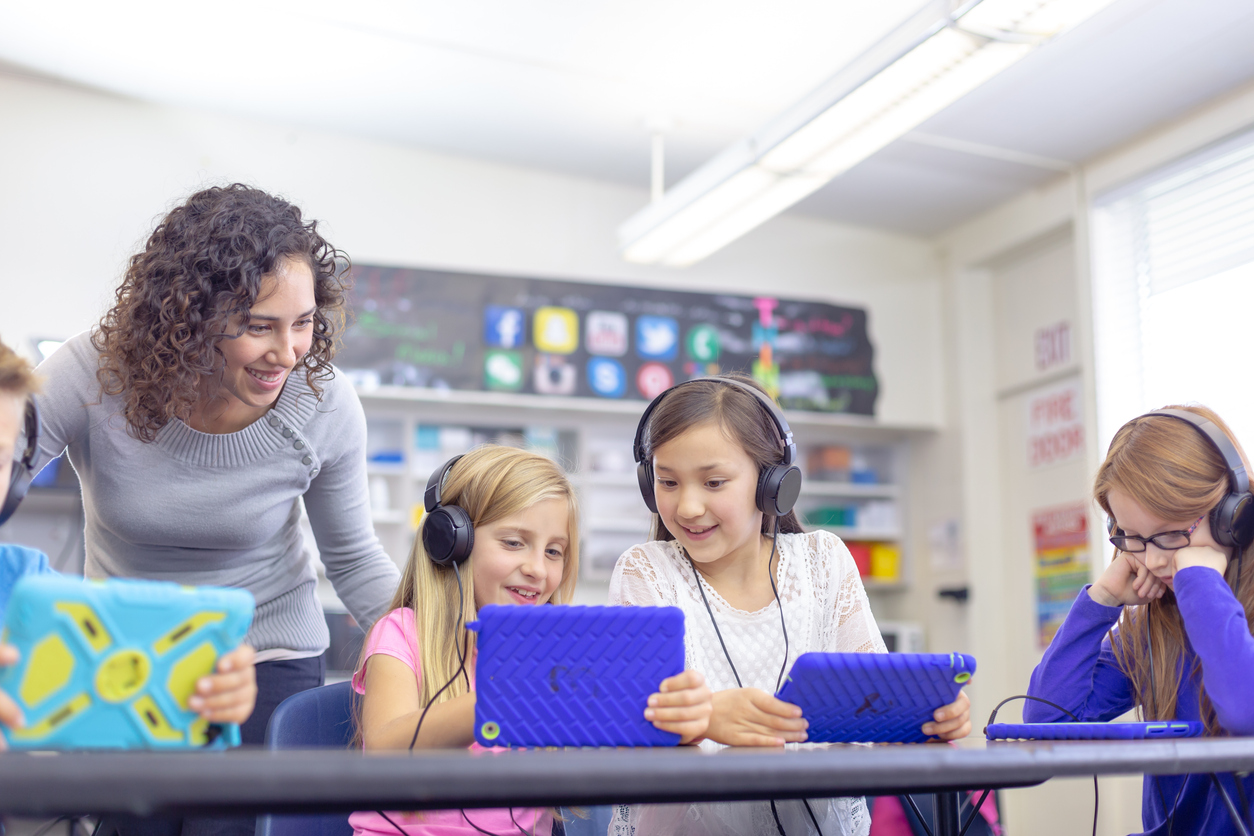Expert Tutors Offering Primary Science Tuition Singapore for All Grades
Expert Tutors Offering Primary Science Tuition Singapore for All Grades
Blog Article
A Comprehensive Guide to the Various Discovering Methods in Main Scientific Research Direction
The expedition of varied knowing approaches in primary science direction offers an opportunity for instructors to enhance student interaction and comprehension significantly. By examining hands-on discovering techniques, inquiry-based approaches, and collaborative methods, we can recognize effective techniques that satisfy numerous learning designs. Furthermore, the assimilation of innovation and separated guideline plays a crucial duty in promoting a comprehensive atmosphere. The question stays: how can these approaches be properly implemented in the classroom to optimize their impact? The answer exists in a better assessment of each strategy and its effects for training scientific research.

Hands-On Understanding Methods
Hands-on understanding methods play a crucial function in primary scientific research direction, engaging trainees in active expedition and experimentation. These approaches enable learners to connect directly with phenomena and products, cultivating a deeper understanding of clinical concepts. By making use of manipulatives, designs, and real-life experiments, educators develop a setting where trainees can observe, assume, and test their concepts.
Such techniques not only boost comprehension yet also cultivate important reasoning and analytic abilities. When trainees take part in activities like building simple equipments, growing seeds, or carrying out chain reactions, they are encouraged to ask questions and look for solutions with their own observations. This experiential technique helps to demystify intricate clinical concepts, making them extra relatable and accessible.
Furthermore, hands-on understanding advertises cooperation amongst peers, as pupils often work in groups to carry out experiments or share findings. This team effort not just enhances their understanding experience but likewise establishes crucial social skills. Ultimately, incorporating hands-on strategies in key science direction cultivates a long-lasting love of learning and curiosity regarding the all-natural globe, laying a solid structure for future scholastic searches in scientific research and beyond.
Inquiry-Based Learning
Inquiry-based understanding is an educational technique that motivates trainees to ask questions, investigate sensations, and build their own understanding of clinical ideas. This method changes the focus from traditional teacher-led direction to a more student-centered experience, where learners take the campaign in their instructional trip. By cultivating interest, inquiry-based understanding promotes deeper interaction with the product, permitting trainees to explore topics in a purposeful context.
In method, this approach usually entails hands-on experiments, observations, and crucial thinking tasks that line up carefully with the scientific method. Trainees are motivated to formulate theories, style examinations, and assess data, which cultivates vital abilities such as analytic and logical reasoning. The role of the teacher in this structure is to promote expedition, leading pupils via the inquiry process while encouraging independent thought and partnership.
Additionally, inquiry-based discovering supports a feeling of possession over the discovering procedure, encouraging pupils to seek expertise proactively. This approach not just enhances understanding of clinical principles but also fosters a lifelong love for understanding, equipping students with the abilities essential to browse an increasingly intricate globe.
Collaborative Learning Approaches
Joint discovering techniques empower pupils to participate in significant interactions with peers, cultivating a shared duty for their academic outcomes. In key science instruction, these approaches motivate learners to interact to explore clinical concepts, solve problems, and perform experiments (primary science tuition Singapore). By taking part in team activities, pupils can utilize diverse perspectives, permitting richer understanding and retention of scientific knowledge
One secret aspect of joint discovering is the emphasis on interaction abilities. Students must express their thoughts, pay attention actively to others, and discuss ideas, every one of which are crucial competencies in both real-world and academic contexts. This social interaction not just enhances their understanding of scientific sites principles yet also advertises team effort and conflict resolution abilities.
When trainees see the value of their payments within a group, they are extra most likely to take possession of their discovering journey. Overall, including collaborative discovering techniques in main science instruction grows a vibrant knowing atmosphere that prepares students for future scholastic and social difficulties.
Innovation Integration in Scientific Research
The assimilation of innovation in primary scientific research direction enhances finding out experiences by giving ingenious tools and sources that sustain various teaching techniques, consisting of collective discovering - primary science tuition Singapore. The use of digital systems, simulations, and interactive applications enables students to involve deeply with scientific principles, facilitating an extra hands-on strategy to discovering
Online laboratories, for example, make it possible for learners to conduct experiments securely and successfully, promoting inquiry-based knowing. These devices can imitate real-world scientific situations, allowing students to visualize complex procedures that would certainly be challenging to replicate in a conventional classroom setup. In addition, modern technology promotes communication and partnership amongst students, as they can share findings and collaborate on jobs with on the internet platforms.
Furthermore, multimedia presentations and instructional videos can enrich lessons by satisfying diverse learning designs, making abstract principles much more available. Information evaluation devices additionally empower trainees to accumulate and interpret clinical information, reinforcing crucial believing abilities. In general, the critical incorporation of innovation in key science instruction not just boosts involvement yet also prepares students for a technically sophisticated society, equipping them with necessary check over here abilities for future clinical undertakings.
Distinguished Direction Approaches
Set apart guideline approaches are essential for dealing with the diverse needs of learners in main scientific research education and learning. These methods allow teachers to tailor their mentor techniques to fit varying abilities, interests, and finding out designs within the class. By using separated guideline, educators look at this website can develop a comprehensive atmosphere that promotes interaction and improves understanding of scientific concepts.
One effective approach is to make use of flexible organizing, which allows pupils to collaborate with peers at comparable ability levels or with varying point of views. This method urges peer knowing and promotes essential thinking. In addition, using selections in tasks can equip students, permitting them to choose projects that reverberate with their passions while still satisfying curricular objectives.
Furthermore, integrating tiered tasks is another important technique. Deliberately jobs with varying degrees of intricacy, instructors can guarantee that all students are appropriately tested, no matter their proficiency. Making use of developmental analyses to assess comprehending more allows instructors to readjust their training approaches dynamically, ensuring that each learner receives the support they need.
Inevitably, executing distinguished direction approaches in primary scientific research education and learning not only improves pupil knowing outcomes yet additionally cultivates an enthusiasm for science, preparing students for future scholastic pursuits.

Conclusion
In summary, effective primary scientific research guideline demands a diverse method that encompasses hands-on understanding, inquiry-based methods, and joint strategies. The combination of technology and separated instruction additionally caters to diverse understanding styles, promoting a setting favorable to exploration and crucial reasoning. By executing these strategies, educators can boost student involvement and comprehension, inevitably nurturing a lifelong interest for science and questions. Such thorough approaches are crucial for developing notified and interested future researchers.
The exploration of diverse learning methods in primary science instruction provides a chance for educators to improve student engagement and understanding substantially.Hands-on discovering strategies play a critical duty in main scientific research guideline, engaging trainees in active exploration and trial and error.Inquiry-based understanding is an educational approach that motivates pupils to ask concerns, investigate phenomena, and build their very own understanding of scientific principles.Joint understanding techniques encourage students to engage in purposeful communications with peers, fostering a shared obligation for their educational outcomes. In general, including collaborative discovering approaches in primary science direction grows a vibrant learning atmosphere that prepares trainees for future academic and social obstacles.
Report this page